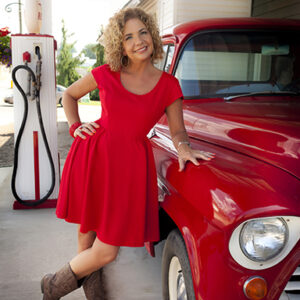
In today’s fast-moving world of blogs, cell phones and CNN, you may be wondering how we find the thousands of old-fashioned products that pepper our site, catalog and retail store. Who hand dips candles and weaves picnic baskets? Where can you find someone to create custom wrought iron, or make birdhouses out of upcycled wood?
And thus begins a series where I introduce you to a selection of our favorite vendors.
Scents of the Season:
“Not all candles are created equally,” explains our favorite local chandler, who created this line for Lehman’s. “You might think it just takes some wax and a wick, but there is much more to it. There are specific characteristics of waxes, wicks, scents and colors. A chandler needs to know the science behind the materials.”
Christine (because she makes product for us exclusively, we prefer to keep her identity confidential) spent a year studying the science behind the product before opening her full-time business as a chandler, the old-world name for a person who makes candles. “I graduated with a fine arts degree with the intention of teaching,” she explained. “I soon realized the hands-on, creative aspect of art was what I craved, not teaching it.”
She works by herself, in what was originally the laundry building behind the 19th century home she shares with her husband. “You have to be very disciplined when you are running your own business. I work all day, sometimes every day, but I enjoy what I do, especially creating new candle lines.”
Christine blends high temperature, fully refined waxes to achieve virtually dripless, clean- and long-burning candles. And she does it all by hand. Like chandlers have been doing it for centuries. “People ask me, ‘Why don’t you automate? You could make so many more candles.’ It is labor intensive, but it is a labor of love.”
As I was talking to Christine, she had to excuse herself for a minute. “I am dipping bayberry candles today and I can’t let them overcook,” she said apologetically. When she explains the secret  formulas she concocts using only the finest ingredients, she reminds me of a chef in a high-end restaurant.
formulas she concocts using only the finest ingredients, she reminds me of a chef in a high-end restaurant.
“To get the best burning properties possible, each candle style has its own unique blend,” she said. “I also custom blend my own dyes to attain unique color combinations not seen in mass produced candles. My candles are solid color, and never over-dipped to make them look like something they are not. Only fragrances specifically formatted for candles are used so that the scent will thoroughly blend with the wax and burn cleanly .”
The jelly jar candles she makes for Lehman’s, for example, burn for 40 hours! Each year I choose my favorite new Lehman’s product to give to all my college friends. This year they are each getting a jelly jar candle. Now the only decision is what scent for each person. Laura would like the Mulled Cider, but I know Cindy would go for Pine Needle. Pure Vanilla seems right for Teri, but her sister Meredith should get Christmas Cheer. And either Pumpkin Pie or Cinnamon Stick for Carolyn….you get the idea!
If you are a catalog customer, look for our Holiday Gift Guide coming to a mail box near you soon! The cover photograph features Christine’s candles (or Lehman’s candles, I should say) in a gift basket, perfect for the anyone your our list.































This reminds me of when we use to carry candle-making supplies where I work. For many years we had people coming to us to buy wax, wick, essential oils, perfume concentrates, wax coloring, molds, how-to books. Then all the sudden they stopped buying stuff for making candles, so the store stopped carrying the supplies. I was really disappointed with the local community, it seemed like no one enjoyed making things for themselves anymore. We use to have great fun making candles by rolling sheets of beeswax around candle wicks. We’d give classes on how to make candles, among other things, and people would come to learn and socialize. Those were the good ol’ days, but now the interest seems to have dried up.
I’m glad to see that someone is still making candles the old-fashioned way. Beyond creating a useful and beautiful product to sell, skills like that of the Chandler need to be preserved in an increasingly automated and mechanized world. There is a real charm to something handmade that you just can’t get from a mass produced product. And yet it’s really difficult to get away from mass produced products made in foreign countries. Everywhere you go, you see candles with a Made In China, or Made In Taiwan, or “Hecho En Mexico” sticker on them. Now I’ve been selling candles and other things where I work for going on 14 years now. And I can tell you that nothing beats a good handmade candle. We have no end of problems with mass produced candles from big factories. Sometimes we get candles with no wick in them, which is basicly a giant crayon. Other times we get candles in glass containers that come in with the glass broken in the box, I guess production lines aren’t to gentle on the product.
Not only does the handmade candle have the potential to be of higher quality, but when you think about it in terms of breakage, recycling, packaging, handling, and having to ship defective product back to the manufacturer, it’s more efficient to invest in the work of a local artisan who handles their product more carefully than a minimum wage factory worker who’s only goal is to collect a paycheck from their boss at the end of the day.
I really, really wish that more people would take the time to hand-make the things they use themselves. But I know that is increasingly difficult in todays faced-paced, modern world. So barring that, I really wish more people would buy handmade items from local artisans. And I really wish local artisans, supported by their local communities, would buy their supplies from local businesses who buy their stock from local materials producers. Everyone supports each other, everyone makes a living, and you build a stronger community. And knowing how difficult that is, I really wish people would at least go back to buying domestic products that may cost a little more, but are worth it because they are of better quality instead of buying cheap crap made in China, Taiwan, Mexico, or India that falls apart two weeks after you get it or comes in broken and you have to send it back for a replacement. I think if yer gonna by something made overseas, it should be because it’s the highest quality you can find and because no one domesticly is producing it. Not because it’s the least expensive item on the market (which is usually cheap crap, you get what you pay for).